Command Palette
Search for a command to run...
Nvidia's Chinese Official Website Deleted 4090, and the Scope of the Chip Export Ban Was Expanded, With A40 and A6000 Listed

01 The US Department of Commerce's new rules on chip exports to China officially take effect
On November 16th local time, the new export restrictions on chips and semiconductor equipment (hereinafter referred to as the chip export restrictions) issued by the Bureau of Industry and Security (BIS) of the U.S. Department of Commerce officially came into effect.
The new rule was updated by BIS on October 17 and aims to further restrict China's purchase of high-end computing chips and semiconductor equipment involving advanced processes. U.S. Commerce Secretary Gina Raimondo bluntly stated,The ban aims to limit China's "access to advanced semiconductors that could drive breakthroughs in artificial intelligence and high-performance computing (AI and HPC)."
On November 17, NVIDIA's official Chinese website removed content related to the RTX 4090 graphics card.
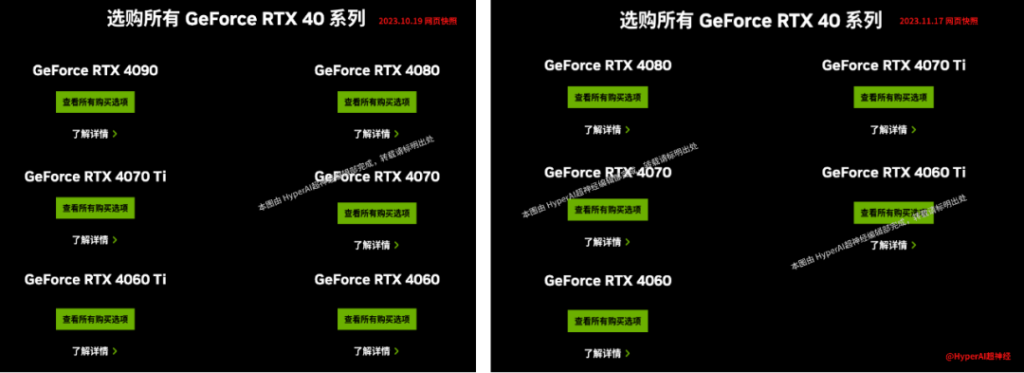
Two web page snapshots show that the 4090-related content has been removed from the introduction page of the GeForce RTX 40 series graphics card, and the RTX 4090 rendering originally used for display has also been replaced with RTX 4080.
The change is a direct response to new regulations issued by the U.S. Department of Commerce on October 17, which severely restricted the export of high-end AI chips to China.Including NVIDIA's high-performance GPU product line - A100, H100, A800, H800, L40, L40S and the highly anticipated 4090.
Earlier in mid-to-late October, during the policy disclosure period, the U.S. Department of Commerce immediately halted the export of A800 and H800 to China.
02 Dell sales documents leaked:A40, A6000, 4090 are all on the banned list
After the US announced the export ban on Chinese chips, uncertainty and tension in the industry continued to rise. On November 17, this tension seemed to reach its peak.
Dell's sales documents detailed the banned countries, product models, guidance and other information. The list of Nvidia GPUs that ultimately failed to pass the review included not only the previously expected A100, H100, A800, H800, L40S, L40 and other graphics cards,A30, A40, L4, and RTX A6000 have also been added.Among them, the highly anticipated RTX 4090 is also on the list.
The discussion in the domestic consumer community on whether 4090 is on the banned sales list has also reached a definite result.
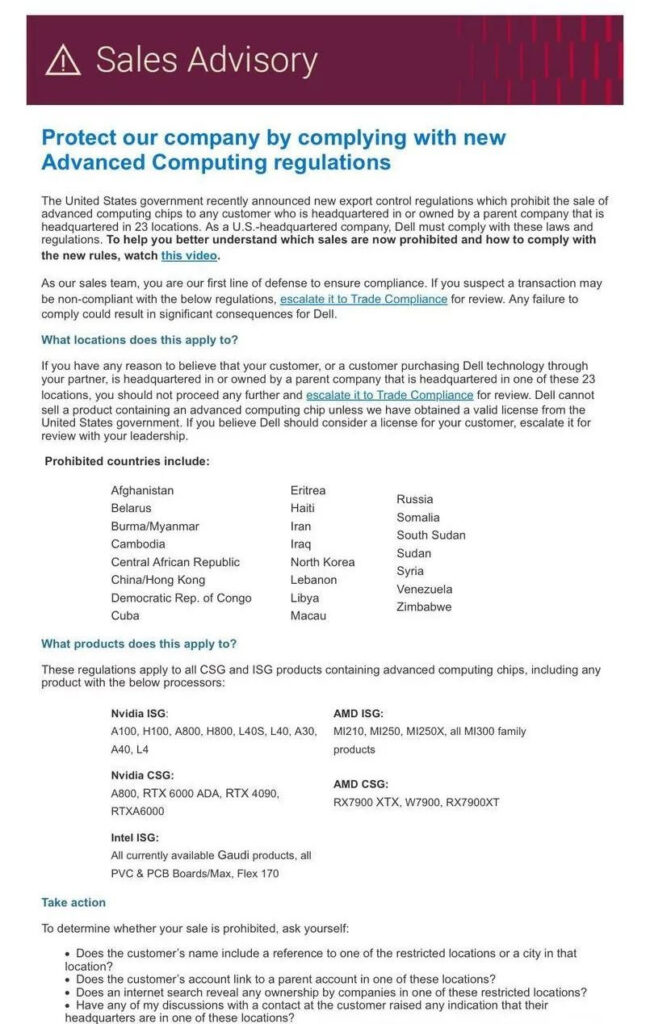
Dell sales documents: detailed list of prohibited countries, product models, guidance and suggestions, etc.
Other banned products include several chips from AMD and Intel.
Among them, AMD's restricted products cover its server-level GPUs, including MI210, MI250, MI250X and all MI300 series products, as well as consumer-grade graphics cards RX7900 XTX, W7900 and RX7900XT.
For Intel, the restrictions apply to all existing Gaudi products, as well as all PVC & PCB boards/Max, Flex series products.
NVIDIA's limited GPU models are distributed in terms of compute cores and memory size:
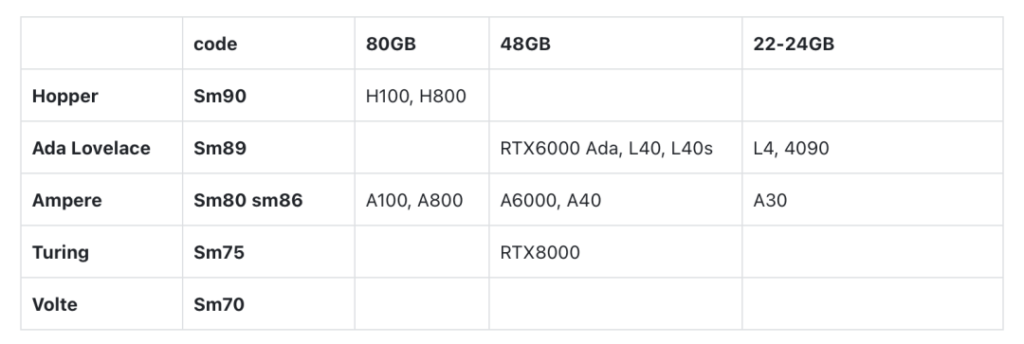
Large Language Model (LLM) requires a large video memory and a high bandwidth rate during the calculation process. Mainstream LLM reasoning frameworks such as vLLM and xinference usually support NVIDIA up to sm75 or even only sm80.
After the ban was extended to A6000 and A40, all of Nvidia's current high-memory products were affected. The limited computing performance is serious, but the lack of video memory support is even more fatal.The loading of large models into the chip will be significantly affected.
In addition, although the video memory of chips such as RTX 4090, A30 and L4 is small,However, since it can only provide more than 300Tops of computing power on the int8 single indicator,This resulted in these GPU models being included in the restricted list, even though they were not originally intended to be banned.
The memory size required by mainstream model parameters during inference is:

It can be seen that if the restricted specification chips cannot be obtained, LLMs with a parameter scale of more than 30 billion will be forced to use more chips during the inference process.However, cross-card interconnection will significantly increase the cost of model operation and reduce reasoning efficiency, which will seriously affect the application of LLM in the actual implementation of AI.
In addition, consumer-grade graphics cards such as the 4090 are actually used in basic scientific research practices by many scientific research institutes due to their extremely high cost-effectiveness.
Blocking products with high video memory and any computing index above 300Tflops (Tops) makes the US Department of Commerce's intention to lower the chip ban index very clear. Its actual purpose is twofold:Restrict the research and development and large-scale application of large language models in China's artificial intelligence industry, while curbing the AI research foundation of China's scientific research community.
03 Nvidia's alternative products have poor performance:Difficult to meet the reasoning needs of LLMs
On November 13, in response to the US's export controls on high-performance AI chips to China, NVIDIA confirmed that it will launch three new AI chips - HGX H20, L20 PCIe and L2 PCIe, designed specifically for the Chinese market.The performance of these new chips is significantly reduced compared to the company's flagship H100 series to comply with US export regulations.
In particular, the HGX H20 chip, designed to meet the needs of AI model training, will have limited bandwidth and computing speed, and its overall computing power is expected to be about 80% lower than the H100 GPU chip.This performance adjustment makes the computing power of HGX H20 only one-fifth of that of H100.
While all three chips comply with the U.S. export ban, their performance is only comparable to Nvidia's Volta and Turing architectures from five to six years ago.These two generations of products have been discontinued for more than 2-3 years.
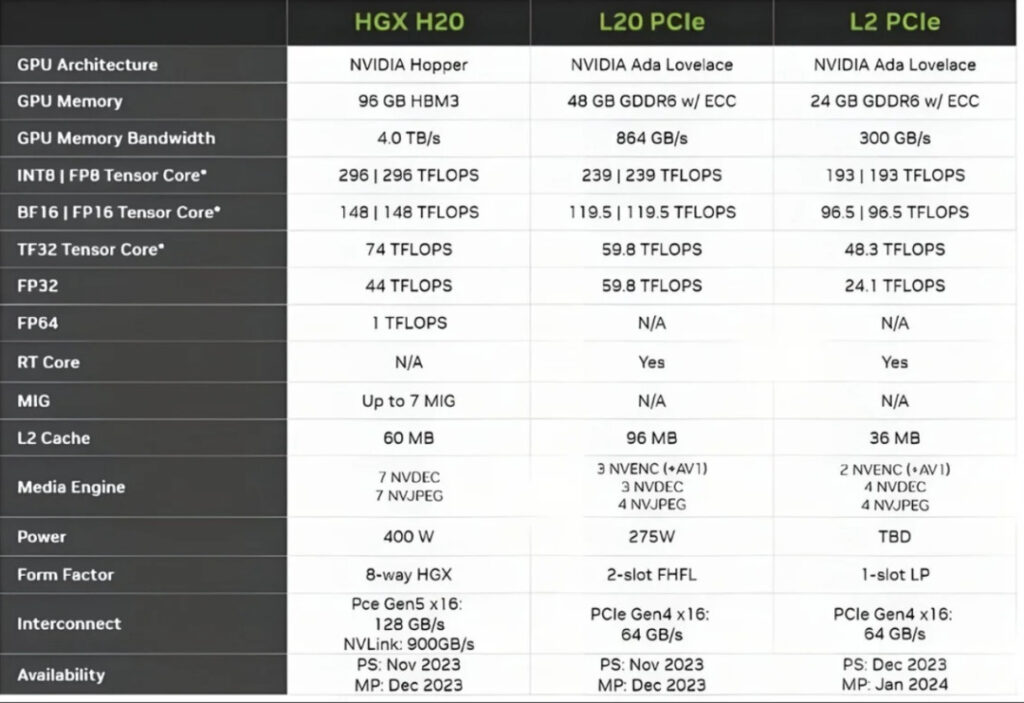
Nvidia will launch three castrated chips to comply with US chip export restrictions on China
Although the Hopper core chip has a built-in dedicated acceleration unit for the Attention architecture, it is similar to the DSA architecture.However, the speed of the core reasoning LLMs after castration will still be greatly reduced.This will lead to a significant increase in costs for purchasing companies.
In addition, the US Department of Commerce has made changes to its sales ban policy for the simplified versions of H800 and A800.If H20's optimization of LLMs maintains superior performance, it will probably be included in the ban list again.
04 It is imperative to establish a domestic independent industrial chain
Since 2021, TSMC and other international chip manufacturers have been required to submit "Request for Information" to the US authorities.The request includes key information such as a list of major customers, inventory and revenue share.
October 2023The US chip sanctions ban on China has expanded to include Moore Threads and BiRen Technology after Huawei, Cambrian and other manufacturers.Other domestic chips with more than 300 Tflops or Tops in any computing indicator, although they may be lower than the computing indicators in the US control ban, are still subject to intervention because they affect the US's intention to contain China.
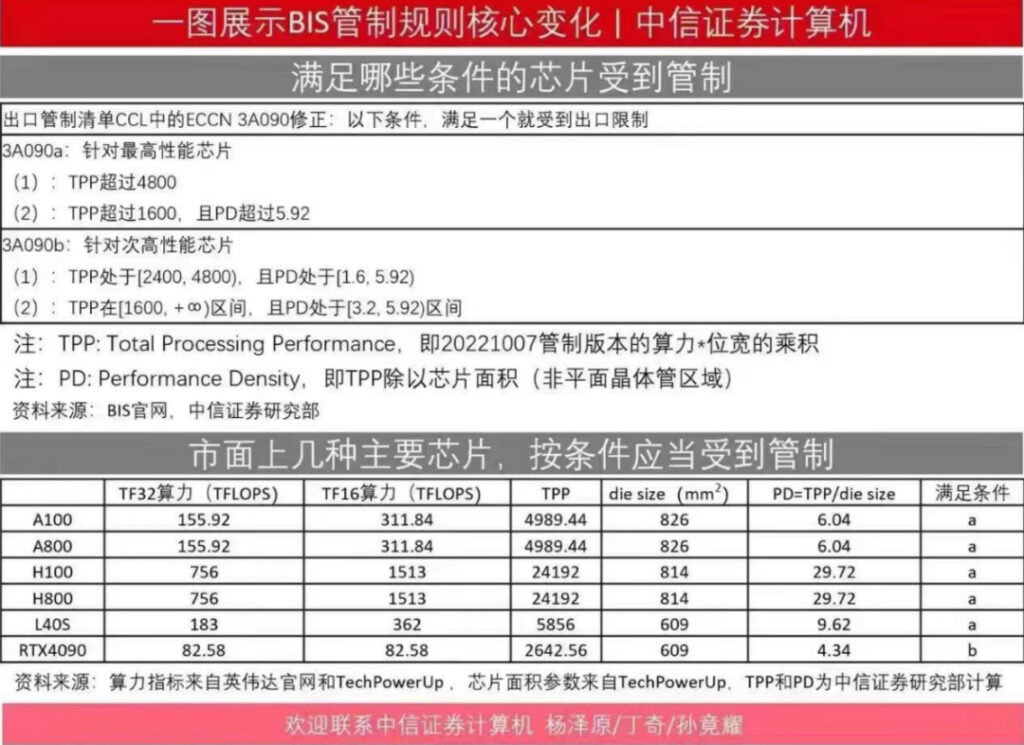
Chip hashrate indicators affected by the ban
Against this backdrop, China's chip industry is facing a critical turning point.
To maintain competitiveness in artificial intelligence and advanced scientific research and break through development bottlenecks, China must accelerate the construction of an independent and controllable R&D chain.This process requires not only strengthening the research and development of core technologies, but also achieving self-sufficiency in various aspects such as materials, design, manufacturing, packaging and testing to ensure that scientific and technological progress is not disturbed by external factors.
Although this goal is challenging, it is the only way for China to ensure its long-term technological security and sustainable development of the industry.








